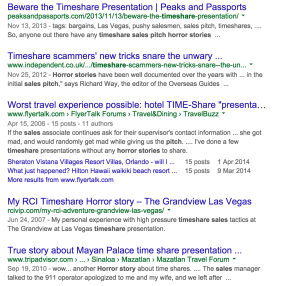What’s the hashtag for the new tax review? There are several: #taxreview, #rethink, #bettertax, which means there may as well be none.
To describe Australia as excited for this review would be, shall we say, intemperate.
Was there a time when a major review was major? When the big splash of a report launched a thousand editorials and inflamed as many angry talk back callers?
It’s easy to imagine the answer is yes. But that is probably based on us remembering the big ones, the ones that cut through. Plenty of reform drives run out of fuel.
It is early days, but this review seems to be sputtering. Yesterday morning at 9am The Age had up two stories about the review by Economics editor Peter Martin. One reporting, one editorialising.
By 12.17pm they were both gone from the front page.
They were replaced by a strange little story about how Uber made Joe Hockey worry about GST. (I know mentioning Apple in headlines creates a huge number of clicks and suspect Uber is also on the keyword list editors love.)
Surprised, I went hunting around the net at that time to see what other coverage I could find. Both the Australian and the AFR had the tax review as their top story. But The Age had the Uber story in the 7th spot on its site, and the Herald Sun offered me over 100 links before I found a Breaking News section right at the bottom of the page where, in tiny font, there was mention of the tax review.
The tax paper itself worried about this on page iii.
“To deliver lasting, workable reforms, the community needs to be on board and engaged in the conversation.“
I kept finding evidence the community wasn’t.
On the ABC news, a story about a suburban church burning down – with no casualties – ran higher than the tax story. And on Reddit, a link about the review got 20 upvotes, while this cat with a map of Australia on its nose got over 1000.

Is this one of those articles that says “social media is making us dumb!”? Then spends a few paragraphs yearning for a golden age that didn’t exist, before vaguely hoping everyone will “grow up”?
No.
I see people discuss policy all the time. Online and off. Social media can be a powerful force for good, when people care.
So why has this review not engaged us yet?
I see three big reasons, two of which represent mistakes by a government I believe is sincere in its desire to achieve something – anything! – before the next election.
1. The discussion paper contains a headline idea that is undeliverable. Nobody need worry about the government raising the GST.
They lack political capital to do things that should be much, much easier. Like passing their first Budget. Seeing this idea revivified once more just gives people license to pay no further attention.
Props to Mr Hockey for ruling nothing out of this tax paper. It’s brave and principled. But is it wise? I’m unsure.
2. Treasury wrote the discussion paper. This .pdf lacks gravitas, has no imprimatur. If you want people to pay attention to something, it is helpful to have a name behind it. The Henry review had weight because at the time, Henry himself was extremely influential. The ideas in and implied by this discussion paper lack a visible patron.
3. Partly, I think people are disengaged about tax reform because they do not see tax as an input to economic activity. We see tax as something that happens after. We make money, then we pay income tax. We buy food, then we pay GST. We don’t observe all the dissuaded activity and so fail to grasp the systematic effect of taxes, i.e. the link between tax and growth.
Most public discussions I see on tax reform focus on the fairness aspect – who should pay from a justice point of view – not from a growth point of view. This is a shame, because it leads parts of the public to assume Treasury doesn’t care about fairness. I believe they do care, but they are also trying to optimise the effect of tax on growth.
The links from tax to growth are highly debatable – plenty of rich countries have higher aggregate tax takes than us, and plenty of rich countries have different ratios of consumption to income taxes.

Treasury makes this claim:
“each additional $1 collected by way of company income tax reduces the living standards of Australian households by around 50 cents in the long run because of reduced investment.”
I’d like for everyone to be talking about that idea, which rests on assumptions about the mobility of capital. But 99% of the public discussion is about revenue adequacy and fairness questions. If the frameworks people had for discussing tax were the same as the frameworks Treasury was deploying, a more fruitful discussion may take place and Chart 2.9 – marginal excess burden – would be a national obsession.
—
This discussion process is only just beginning, and I hope I’m wrong that people have already tuned out.
I note good articles in the Guardian and New Matilda have appeared today. But at the same time, a new review has been released – on competition policy! We are asking a lot of the polity to absorb both at once.
I guess it is the role of the public sphere – including humble blogs like this – to try to bring ideas in these reviews out of the tarpit and spray them with the hose, in order that they may be introduced to wider society. I shall try to write more about the tax review in coming days and weeks!










